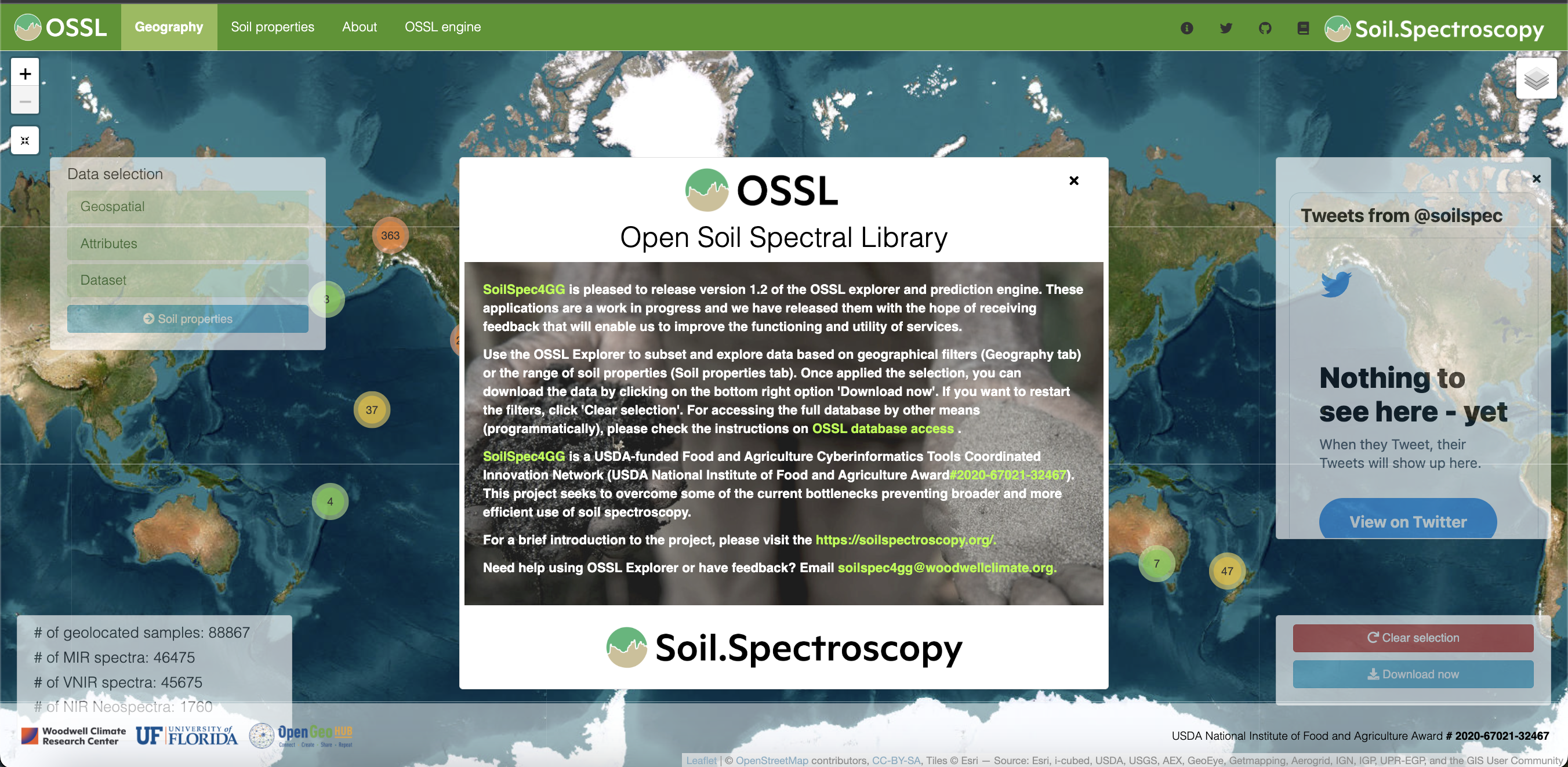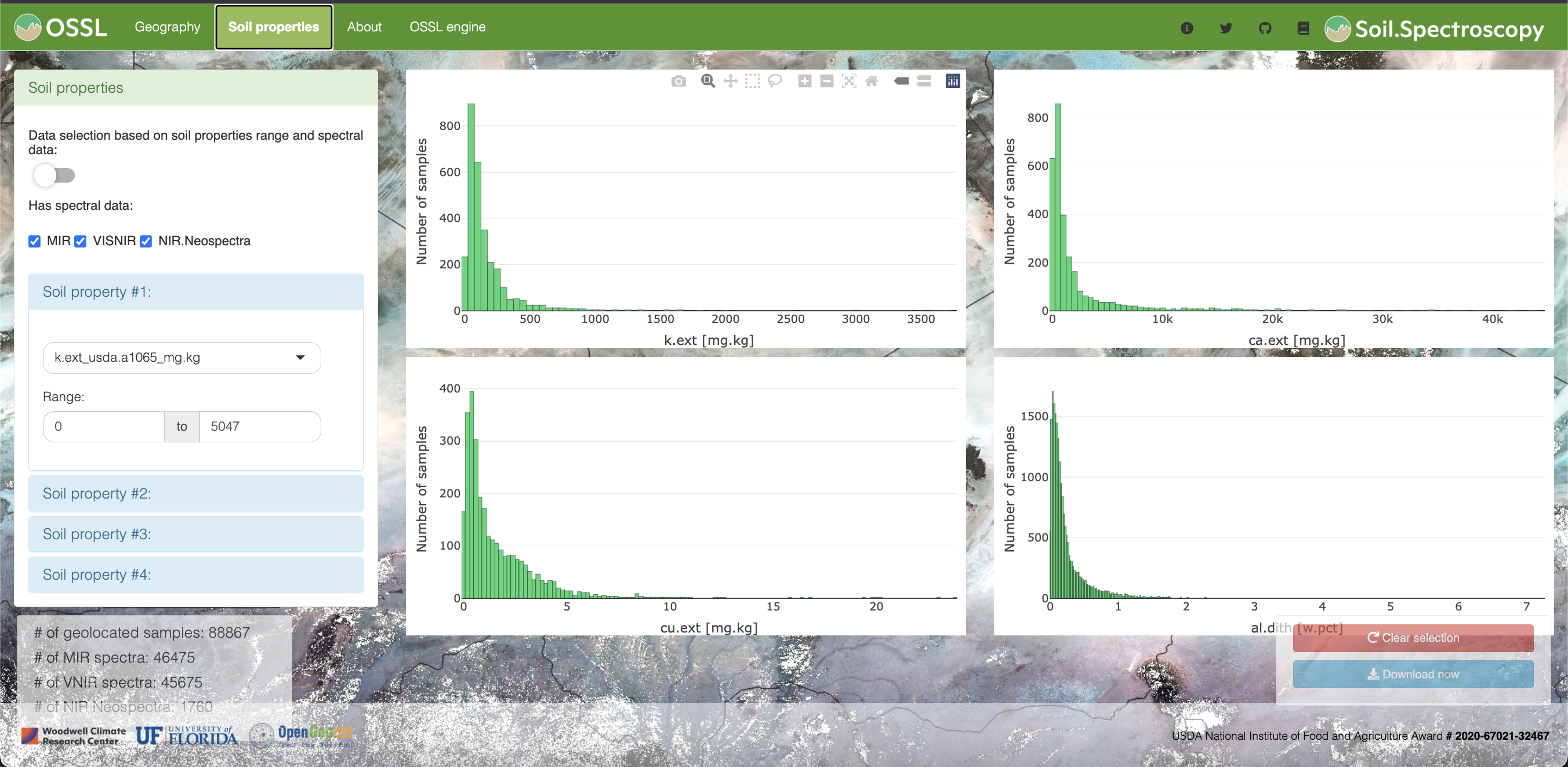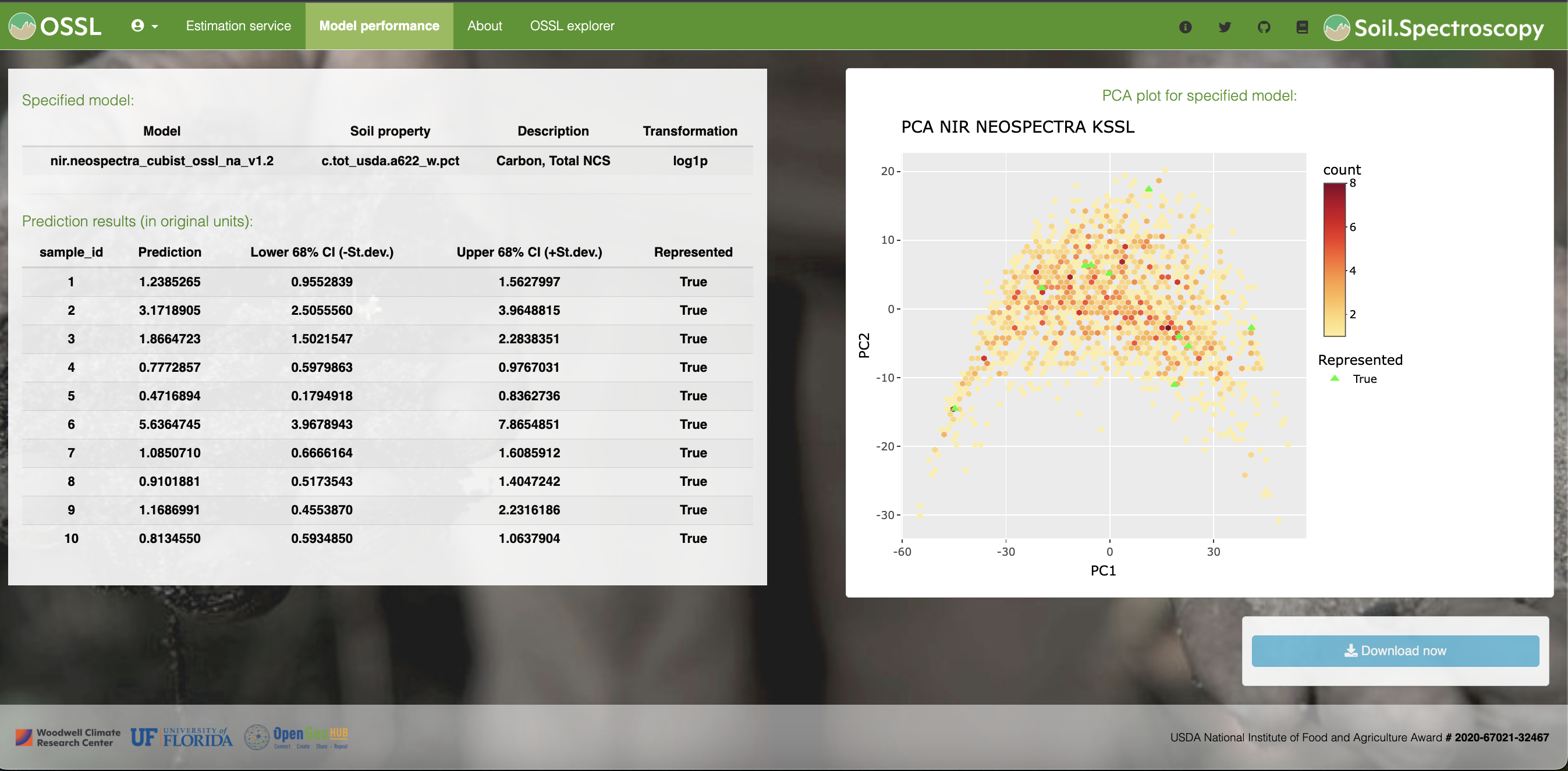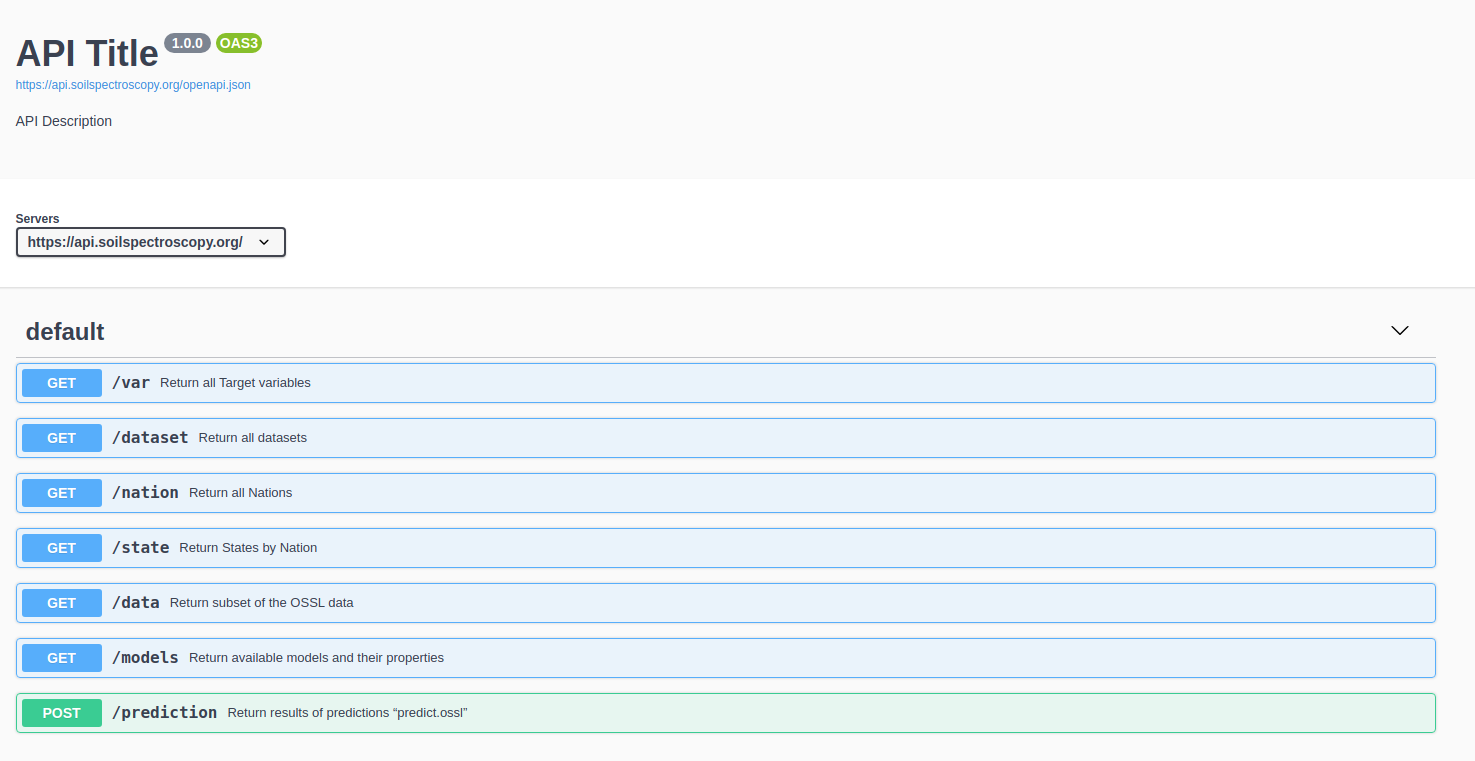
6 Web services
6.1 OSSL Explorer
The OSSL Explorer is a web platform where a user can explore the OSSL database. You can use it to subset and explore the database based on geographical filters (‘Geography’ tab) or on the range of soil properties (‘Soil properties’ tab).
Once applied a selection, you can download the data by clicking on the bottom right option ‘Download now’. If you want to restart the filters, click ‘Clear selection’. For accessing the full database by other means (programmatically) or just download it as csv or qs format, please check the instructions at OSSL database access section..

6.2 OSSL Engine
The OSSL Engine is a web platform where a user can upload spectra from the VisNIR (400-2500 nm), NIR (1350-2550 nm), or MIR (600-4000 cm-1) ranges and get predictions back with uncertainty estimation and representativeness flag.
The modeling framework, cross-validation performance metrics, and further information can be found at OSSL prediction models section.
Please, check some example datasets for formatting your spectra to the file specifications. You can upload either csv, asd or opus (.0) files.
We recommend using the OSSL model type for getting predictions. KSSL models are recommended when the spectra to be predicted have the same instrument manufacturer/model as the KSSL library and the samples to be predicted are well represented by the range of soil properties of interest.


6.3 OSSL API
The OSSL API (Application Programming Interface) is experimental and available to construct customized requests to fetch data, models, and generate predictions. The outputs of predictions can be obtained as JSON or CSV files.
The OSSL API is at the moment based on the plumber R package and is provided for testing purposes only. Users can make predictions with the pre-trained models for 20 spectra per request.
